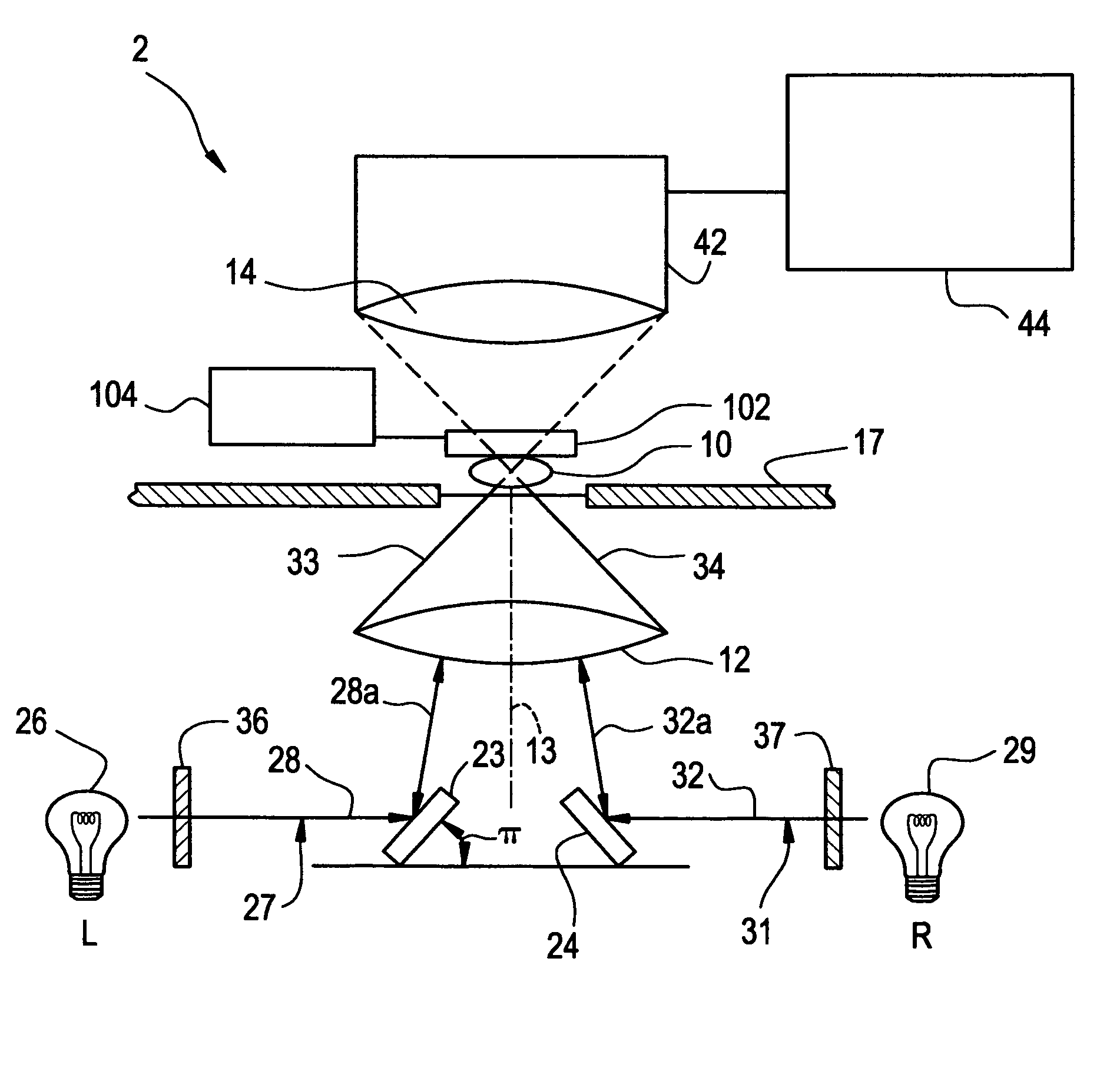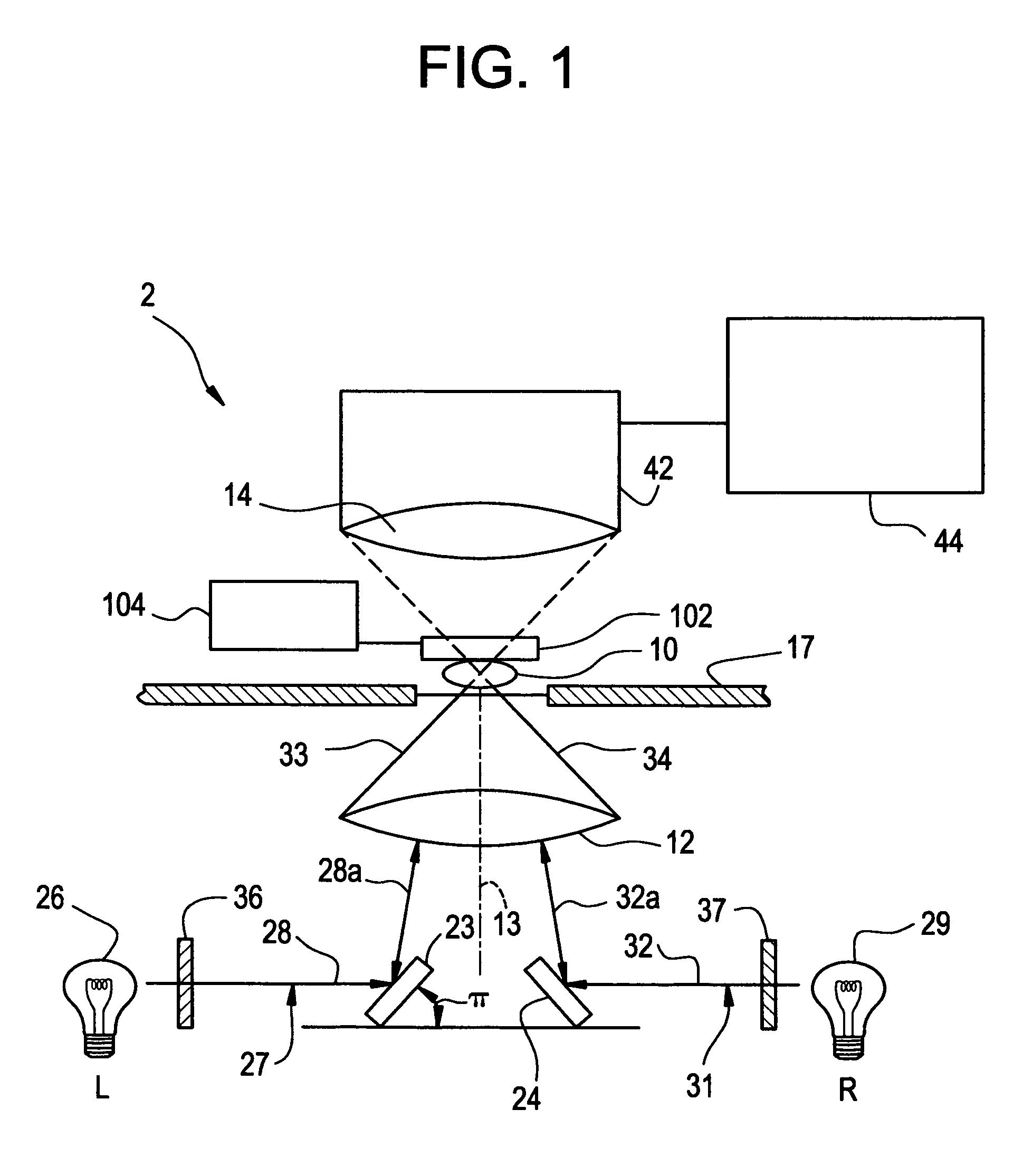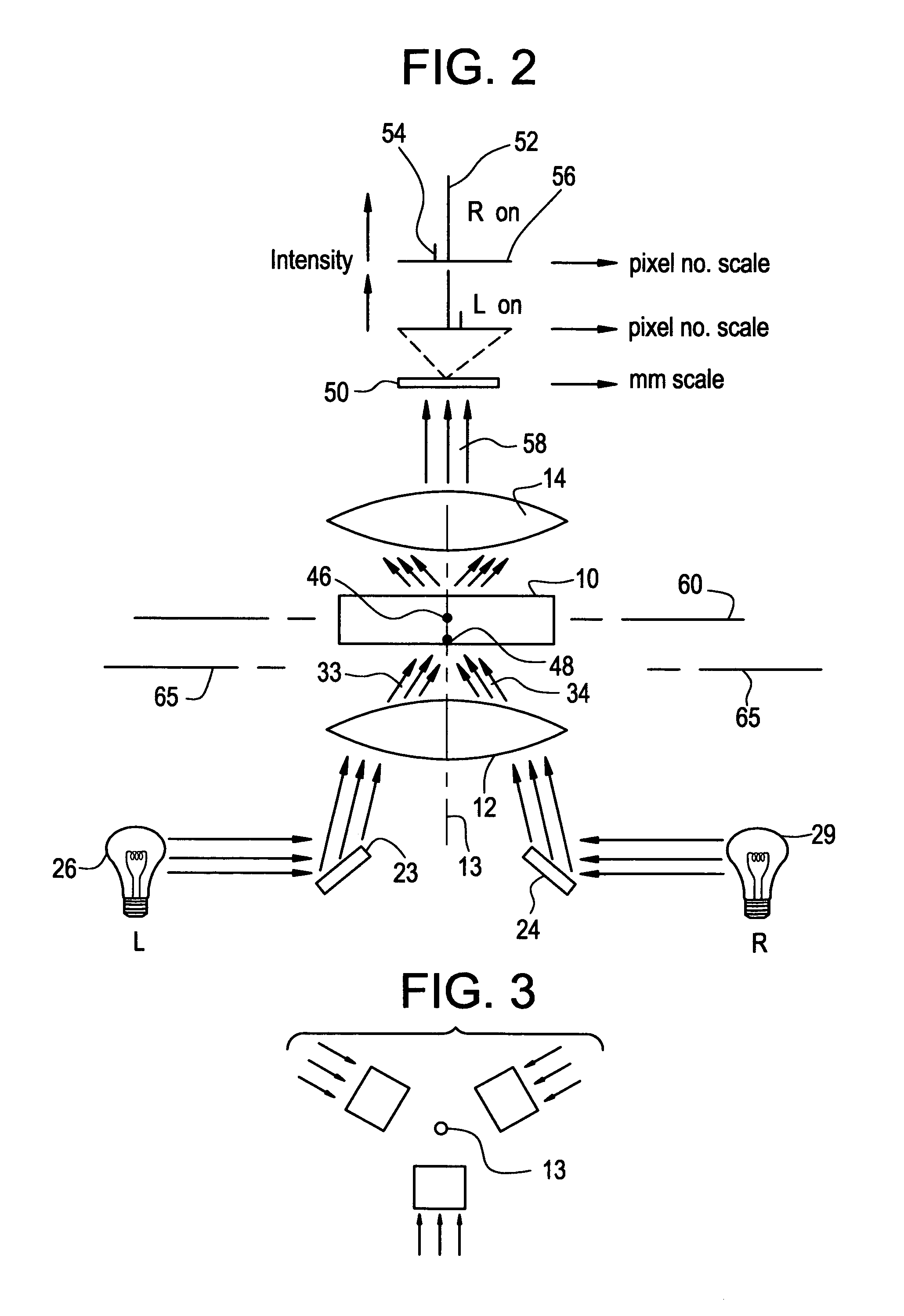Tomographic microscope for high resolution imaging and method of analyzing specimens
a tomographic microscope and high-resolution technology, applied in the field of computerized tomographic microscopes for evaluating specimens, can solve the problems of affecting the quality of specimens, so as to achieve the effect of removing undesirable information
- Summary
- Abstract
- Description
- Claims
- Application Information
AI Technical Summary
Benefits of technology
Problems solved by technology
Method used
Image
Examples
examples
[0069]Optical sections of thick (10 to 40 micron) cell clusters from cervical Pap smears were captured sequentially at 400× using various oblique light paths. Images were then processed with a computer algorithm to produce confocal emulation. Three-dimensional reconstructions were then complied with the high-resolution images using Voxblast software (available from VayTek, Inc. of Fairfield, Iowa). Cells were color segmented, and various volumetric characteristics were emphasized.
[0070]An illustration of the result of using the method of the invention is shown in FIG. 5.
PUM
 Login to View More
Login to View More Abstract
Description
Claims
Application Information
 Login to View More
Login to View More - R&D
- Intellectual Property
- Life Sciences
- Materials
- Tech Scout
- Unparalleled Data Quality
- Higher Quality Content
- 60% Fewer Hallucinations
Browse by: Latest US Patents, China's latest patents, Technical Efficacy Thesaurus, Application Domain, Technology Topic, Popular Technical Reports.
© 2025 PatSnap. All rights reserved.Legal|Privacy policy|Modern Slavery Act Transparency Statement|Sitemap|About US| Contact US: help@patsnap.com



